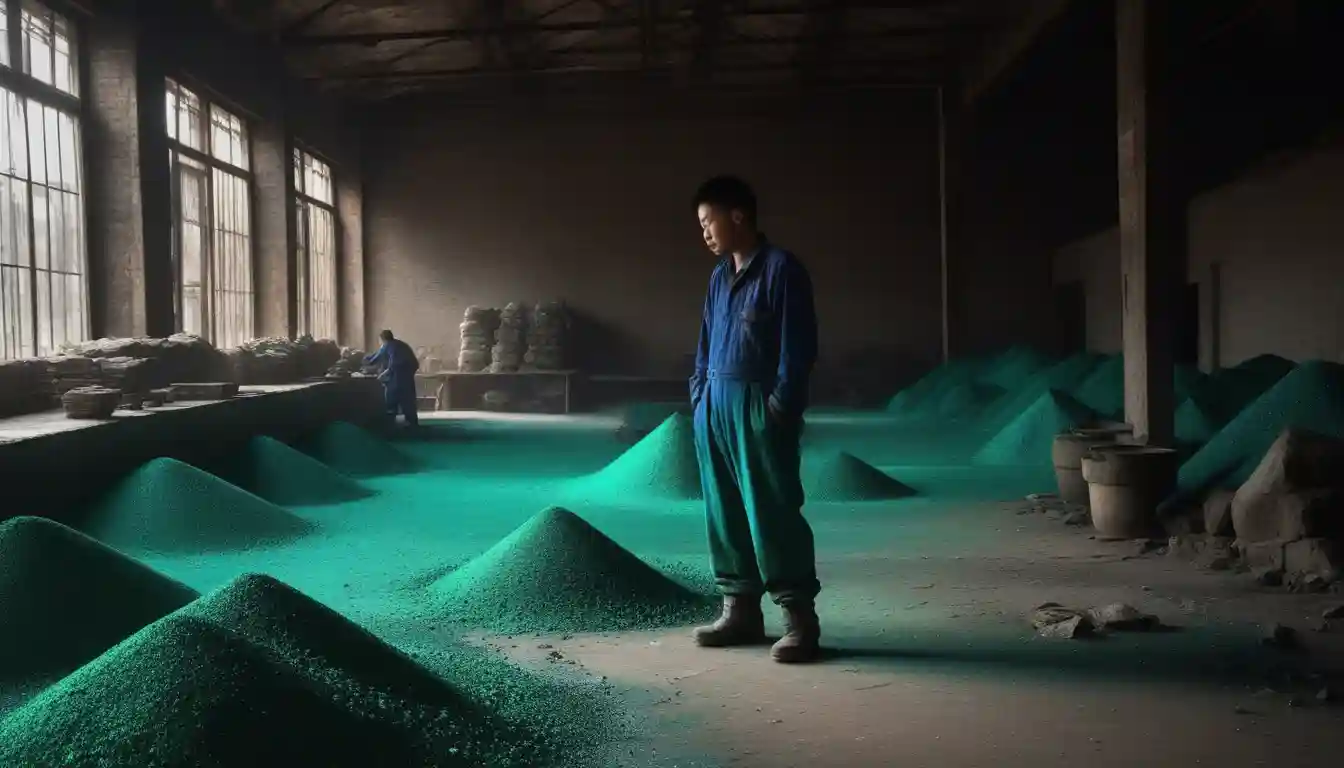
Why the U.S. Still Leans on China for Rare Earths—Despite Having Its Own
Why the U.S. Still Leans on China for Rare Earths—Despite Having Its Own
The United States has plenty of rare-earth resources buried underground and has even ramped up mining in recent years. Yet when it comes to turning those rocks into the metals and magnets that power everything from fighter jets to electric cars, America still depends on China. In 2024, U.S. mines dug up about 45,000 tons of rare-earth oxide concentrates. The country holds around 3.6 million tons in measured and indicated resources. Even so, nearly 80% of the compounds and metals the U.S. uses still arrive from overseas.
Where the real bottleneck lies
The problem isn’t pulling the ore from the ground—it’s what happens next. China dominates the messy middle stage: separating and refining rare-earth elements, then converting them into usable metals and high-performance magnets. Roughly 90% of global refining and separation happens in China. For the heavy rare-earths—used in advanced military gear and wind turbines—China’s grip has been closer to a monopoly. Until recently, it handled about 99% of the world’s heavy-REE processing.
The U.S. has revived its lone big mine, Mountain Pass in California, which is now turning out some separated products—like 1,300 tons of NdPr oxide in 2024. But that’s still a drop in the bucket compared to demand. The midstream build-out is crawling along.
Why separation is so tough
Breaking down rare earths isn’t like sorting M&Ms by color. It’s more like trying to separate nearly identical twins in a crowd—by smell. There are 17 chemically similar elements, and separating them requires hundreds of solvent-extraction steps, complicated chemistry, and constant use of reagents. China didn’t just stumble into dominance here; it built decades of expertise that’s hard to copy quickly.
The environmental and permitting headache
Processing rare earths leaves behind a nasty trail of waste—dust, toxic gases, radioactive sludge from traces of uranium and thorium. For every ton of rare-earth oxide, you can expect about 13 kilograms of dust, up to 12,000 cubic meters of waste gas, 75 cubic meters of wastewater, and a ton of radioactive residue. That’s not something you can just dump in the backyard.
Building new plants in the U.S. means navigating years of permitting and lawsuits. Industry studies often cite 7–10 years just for permitting a mine, and that doesn’t count the long slog from discovery to production. Even government watchdogs say international comparisons are murky, but the bottom line is clear: red tape slows everything down.
Economics: an expensive gamble
Constructing a state-of-the-art separation or magnet facility costs hundreds of millions to over a billion dollars. Profits swing wildly because rare-earth prices rise and fall in cycles, often depending on Chinese competition. MP Materials, America’s flagship rare-earth miner, posted a $65.4 million net loss in 2024, a sharp reversal from the prior year’s profit.
How the tables turned
Back in the 1980s, the U.S. led the rare-earth world. Mountain Pass was the crown jewel. But after environmental mishaps, the mine shut down, and China seized the opportunity. With cheap labor, lighter regulations, and aggressive state backing, Beijing built a vertically integrated supply chain. By the time China cut off exports to Japan in 2010—sparking a World Trade Organization fight—it was clear who held the upper hand.
The U.S. rebuilds its chain
Washington has moved from simply funding research to directly investing in industry. Since 2020, the Pentagon has poured more than $439 million into domestic separation, metals, and magnet projects. In July 2025, it took an even bolder step: a $400 million equity stake in MP Materials, complete with price-floor support.
Texas has become the hotbed for U.S. magnet manufacturing. MP’s Fort Worth facility is getting ready to churn out magnets, while Noveon Magnetics is expanding production in San Marcos. Meanwhile, Lynas is eyeing a Texas heavy-REE plant, though its future depends on whether the economics add up.
Wyoming’s giant resource
One of the most talked-about projects is Halleck Creek in Wyoming, boasting a massive 2.63 billion-tonne resource with about 8.64 million tonnes of rare-earth oxides. On paper, it looks like a game changer. But analysts warn that only a fraction will ever be economically recoverable, and even if it is, turning a giant resource into a working mine is a long and uncertain journey.
A shifting but stubborn risk
China isn’t standing still. It has tightened quotas, restricted exports, and extended controls to cover magnets as well as heavy rare earths. That keeps global supply risks alive. Even with new investments in the U.S., Japan, Europe, and Australia, most forecasts say China will still control the lion’s share of refining well into the 2030s.
That’s why U.S. policy now pushes for a “mine-to-magnet” strategy—building each link of the chain at home or with trusted partners. The goal is simple: make sure one decision in Beijing can’t bring American factories to a grinding halt.